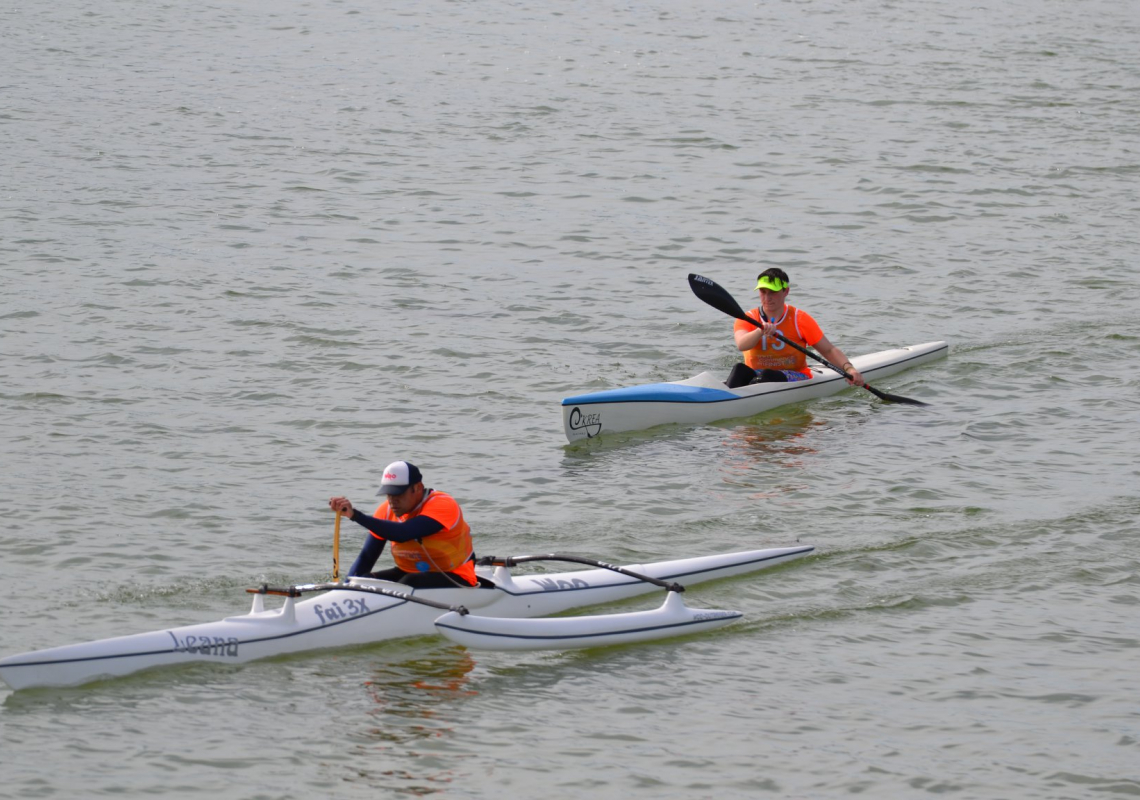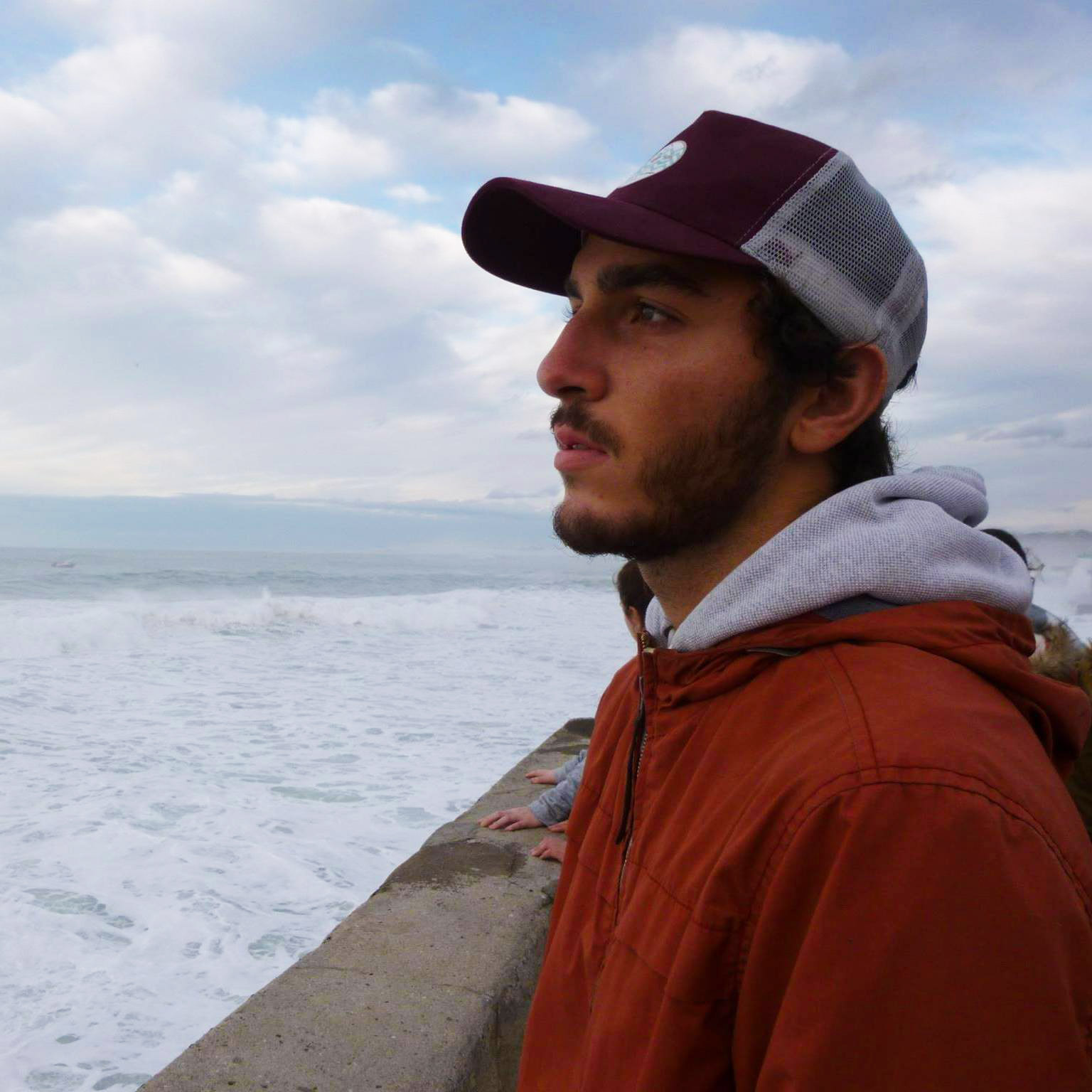The basics of OC1 paddle techniques
The muscles and body parts used
After analysis, the OC1 stroke is an assimilation of known paddling techniques. Canoeing: shoulders, arms and upper body. Surfski, kayak or flatwater racing: legs and hips.
In this article, to explain the paddle stroke, we will consider the upper hand (the one holding the grip), the lower hand (holding the handle), the upper body, the lower arm and the upper arm (with respect to each hand) as well as the hips and the legs.
An effective paddle stroke explained in four phases: (Upper hand, lower hand, position)
- P1 : Load
The upper body leans forward slightly (shoulders above the hips).
Starting position for rotation of the shoulders, upper body and hips: forward movement of the side of the lower hand.
The leg on the lower hand side is flexed (hip forward) and the other leg is tensed.
The upper arm is 1/3 bent.
The upper hand is vertically in line with the lower hand
The lower arm is tense but not extended as far as it will go (+/- 170° angle)
The lower hand is close to the canoe
- P2: Pull: Traction/thrust
Thrust is the force exercised by the paddler on the paddle. For thrust to be as effective as possible, the paddler must use his most powerful muscles and transmit his force to his boat.
Traction begins through rotation of the back of the shoulders and the hips with the thrust of the leg on the paddle side (peddling).
Avoid straightening the upper body to prevent the canoe from bobbing
Once the rotation of the upper body and hips reaches neutral, pull with the lower arm.
The lower hand is always close to the canoe
The upper hand remains as still as possible, it must not move below the shoulder.
- P3 : Lift out
To prevent the canoe from rocking, the paddle blade must leave the water in front of the hips in as vertical a position as possible. Any paddle action behind the hips will slow the canoe. The upper body is in neutral position,
-Shoulder rotation is finished
-The upper hand shifts slightly toward the side opposite the blade. It is no longer on the same axis as the lower hand.
-The upper arm is still 1/3 bent and reaches upward when the blade is lifted out of the water.
-The lower hand begins lifting out the blade at knee level to ensure the blade exits the water even with the hips.
-Once the blade is out of the water, the wrist bends to allow it to exit on the side
- P4 : Return
During this phase, the rower's objective is to position himself as best possible for phase 1.
It is essential to be as relaxed as possible for maximum efficiency over the long term.
Should you change the side of the paddle stroke regularly in OC1 and V1 ? When, how, why ?
You should regularly change your paddle stroke in both OC1 and V1. However, not for the same reasons. In OC1, the rudder facilitates steering, so you change paddle stroke side to save energy and in some cases, facilitate heading out to the surf. As a general rule, you change sides for fresh energy. In flat conditions, you should change every 10 and 15 strokes, but you need to find the number that feels most comfortable to you. Beyond that number, you are less efficient (muscle fatigue). Below that number, you lose thrust efficiency because the first paddle stroke is often less dynamic and has lesser amplitude.
Key points for effective thrust :
Paddle ahead of yourself: for the paddle stroke to be efficient, it must be vertical in the water in front of the paddler.
Brace : The paddler-canoe-paddle set moves according to the force the paddler applies on the brace he has created on the blade. The aim is for the boat to move ahead with respect to the paddle (brace). It is important to think of pulling against a fixed point: the paddle doesn’t move once it’s in the water (P1), instead, the canoe moves forward. Imagine pulling on a pile driven into the water.
Improving your stroke :
To improve your stroke (technique), you need to break down the movement. Continuous paddling becomes automatic. If you want to change your stroke, you need to break down this automatic movement by focusing on a specific point in your technique and not the entire movement.
This means you need to concentrate only on one or two technical points (e.g.: position and leg thrust, the upper hand and the rotation of back, etc.).
When working on your technique, it’s important to take advantage of flat conditions so that you can focus only on your movement.
- Brace : you can vary the size of your paddle and blade to work on your brace. We often think that a large blade will give better brace. But often, the paddler isn’t physically strong enough to use a large paddle. So, you can train a few times with a smaller blade to focus on feeling the brace. More simply, change the position of the lower hand for a short time (e.g. 5 x 1 minute) to change leverage (move it closer to the upper hand) and feel different brace.
- Feel the importance of transmission: Row with your legs folded (heels against the buttocks) to feel the importance of transmission by the legs.
- Load position: Pause (1 to 2 seconds) in the load position (P1) in the air before moving the paddle downward. This lets you concentrate on your position and on bracing
- Keep the upper hand still: For example, you could paddle for a short period (5 x 1 minute) while keeping the upper hand pressed against your forehead forcing you to keep your hand at eye level (exaggerating).





0 Commentaire(s)
Laissez nous un avis sur l'article